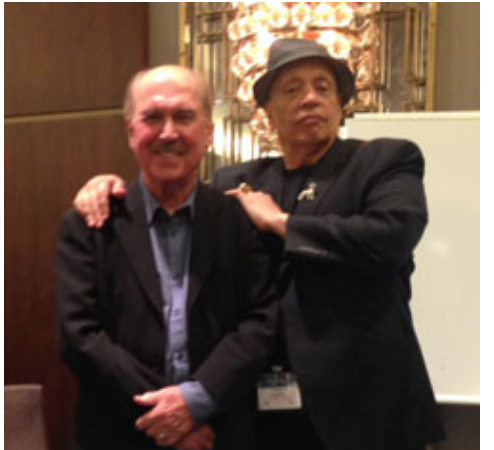
The conference we think of as "Thrillerfest" is really the end-cap of a week of varied events. It started on Monday with the ATF pre-conference. Tuesday was MasterCraftfest, an intensive, day-long workshop with a master thrillerwriter such as Gayle Lynds, Meg Gardiner, Steve Berry, Andrew Gross, Robert Dugoni, Steven James, and more. I participated in a MasterCraftfest three years ago with David Corbett, and I’m still friends with many of the people from that workshop.
My favorite part of the conference has always been Craftfest, which typically runs all day Wednesday and part of Thursday morning. Craftfest isn't panels: it's one or two of the best and brightest bringing you a pure distillation of what they know. This year three panels stood out for me. Jenny Milchman, whose example on how she runs her writing life has taught me much already, and Matthew Quinn Martin, and actor turned writer turned film producer, talked about how they decided that Matthew would produce a film based on her book, Wicked River. Filming begins this fall.
David Morrell always comes up with unique presentation ideas, and this time was no different. His talk was "How To Write Thrilling Comic books." Morrell has written a six-issue Captain America Series (now out as a trade paperback with some delicious extras, including a copy of Morrell's script for the first issue), Spiderman, and Wolverine.
Comic books scripts look a bit like screenplay scripts, but the comic book author is not just the writer, but also the cinematographer, the director, the set designer, the editor. He talked about the close working relationship between writer and the artist, inker, and colorist.
The writer will specify how many panels to a page, for example, whether it's two or the more typical four or six or sometimes eight for a busy action sequence. Here's where comic book writing differed from scriptwriting: what's in between the panels—what's not said—is as important as what's in the panels.
Morrell talked a lot about revelation in comics. He talked about positioning the most powerful images so that the act of turning a page led to a revelation.
The image below, from a Spiderman issue, is a reveal image— one panel stretched across two pages. It was one of the most difficult to explain to the visual artists (Klaus Janson and Steve Bucellato) that worked with him:

Here is how Morrell describes the layout in words:
Page 24
PANEL A (ALL THE WAY ACROSS THE TOP OF THIS PAGE AND THE NEXT): Amid streaking snow, massive poles support power lines that stretch across a section of countryside. Tall, snow-laden fir trees stand next to the power lines.
Along the bottom:
PANEL B: Angle on one of the fir trees. Its branches are weighed down by heavy snow.
PANEL C: Close view on one of the branches, bent low by the weight of the snow.
PANEL D: The top third of the fir tree breaks off.
SFX: CRAAAACCCCCKKKK
Page 25
Continuing along the bottom of the page.
PANEL A: The falling tree hits the electrical lines, causing wires to snap.
PANEL B: Sparks fly as the snapped wires are blown by the snow.
PANEL C: The Manhattan skyline. We see the storm-obscured lights of the city.
PANEL D: The same view of the skyline, but now all the lights are off.
The large-panel-as-reveal struck me, perhaps because it had something in common with cinematic reveals, those moment where a character crests a hill or turns a corner and sees something that explodes his world.
Revelation was also the theme of Walter Mosley's talk, "The Structure of Revelation." Mosley talked about the "potential of the novel to reveal what was previously unimaginable." He said "Plot is the structure of revelation," but also "The story itself might play a minor role in the revelation of the novel."
He compared the character in the story to a farmer in the middle of an open Kansas landscape watching a tornado bear down on him. How will the character deal with that tornado?
He talked about different kinds of structures and reveals, including the role of reveals in epiphanies. "There's craft in revelation but it's not the main thing," Mosley said. He compared the writer to a toddler, who knows that the story is bigger than what she can grasp consciously. "We can meditate on different kinds of structures and reveals, plot, character, places, ideas, time as it passes."
His talk was very complex, too complex for me to do justice to it here. We will have to wait for the promised published monograph. In the meantime we can meditate on the different kinds of revelation.
